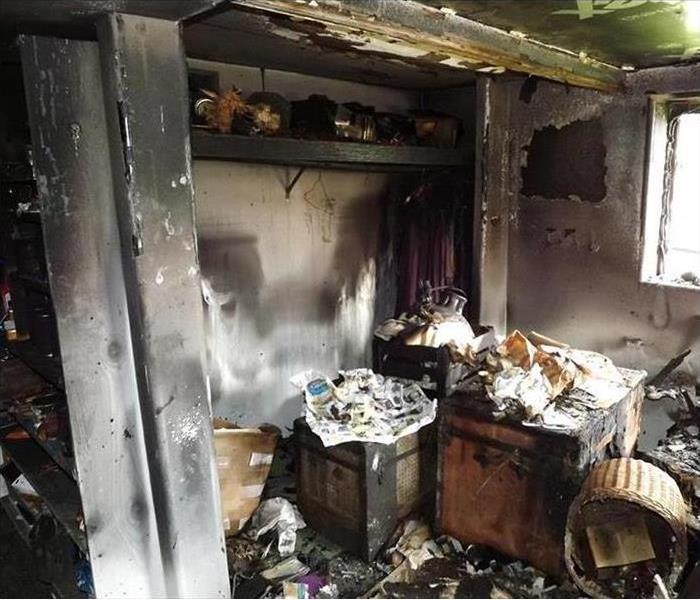The most Common types of Smoke Damage.
7/15/2020 (Permalink)
When you are at work and get a phone call that the fire department is at your home. When you decide to fry some chicken for dinner and it quickly turns into a grease fire. Or you wake up in the middle of the night and see that your room is filled with smoke. These are all situations that are not only tariffing but also life changing. This is something sadly that at SERVPRO of Blackfoot/Pocatello we see frequently. One of the most invasive aspects of a fire are smoke and soot. Which can penetrate various cavities within your home, causing hidden damage and odor. Our smoke damage experience allows us to inspect and accurately assess the extent of the damage to develop a plan of action.
2 Types of Smoke Damage
There are two different types of smoke–wet and dry. As a result, there are different types of soot residue after a fire. To determine which type of smoke has occurred a soot test will be performed. This will identify the correct cleaning procedure that our experienced team will follow.
Some facts regarding smoke and soot:
- Hot smoke migrates to cooler areas and upper levels of a structure.
- Smoke flows around plumbing systems, seeping through the holes used by pipes to go from floor to floor.
- The type of smoke may greatly affect the restoration process.
1. Wet Smoke – Plastic and Rubber
Low heat, smoldering, pungent odor, sticky, smeary. Smoke webs are more difficult to clean.
2. Dry Smoke – Paper and Wood
Fast burning, high temperatures, heat rises therefore smoke rises.
Protein Fire Residue – Produced by evaporation of material rather than from a fire
Virtually invisible, discolors paints and varnishes, extreme pungent odor.



 24/7 Emergency Service
24/7 Emergency Service
